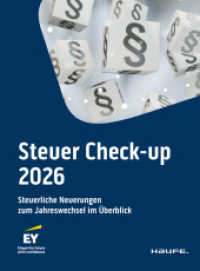- ホーム
- > 洋書
- > 英文書
- > Cinema / Film
Full Description
The rise of more commercially-based, global media has significant implications for the child audience. Many are concerned that the public service tradition of children's television is threatened, and that quality and diversity in programming will be impossible to sustain.
Children's Television in Britain challenges the romantic nostalgia that surrounds contemporary discussions of the subject. Based on an extensive research project, it provides a critical review of the history of children's television in the UK, and a realistic assessment of its future prospects. It looks at how broadcasters have defined the child audience; at the changing nature of children's programming; at the impact of commercial competition and new technologies; and at the role of audience research. The books contributes towards debates about the regulation of children's television; and it offers a case study that will be of more general interest to students and academics in the field.
Contents
Acknowledgments
Introduction: Defining the Child Viewer
1. For the Children: Children's Television 1946-1980
2. Run the Risk: Toward a Political Economy of Children's Television
3. Vision On: Mapping the Changes in Children's Programming
4. Wise Up: The Functions and Practices of Audience Research
5. Look Who's Talking: How Media Producers Define the Child Audience
6. Conclusion
Bibliography
Index








